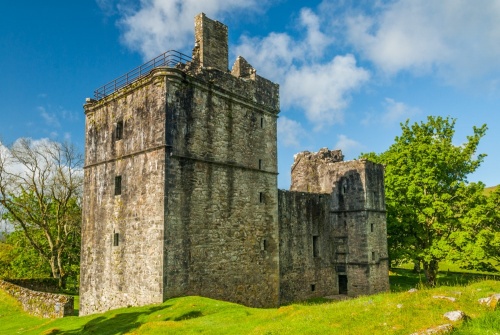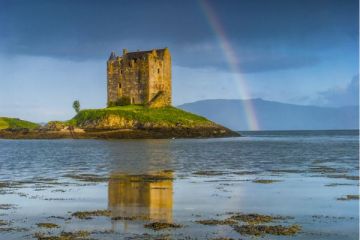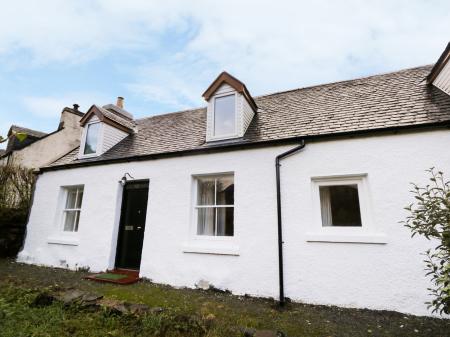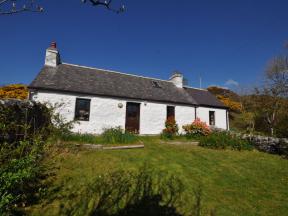
History
John Carswell served as chaplain to the powerful Campbell Earls of Argyll. In 1560 Carswell bought land at the northern end of Kilmartin Glen from Earl Archibald and set about building a substantial fortified house. This was a turbulent period in Scottish history, at the dawn of the Reformation, when the forces of Protestant reforming zeal turned Scotland upside-down.
As chaplain the Campbell Earls, Carswell saw the upheaval of Reformers on the European continent, and he knew that to protect his interests he needed a stronghold, a place of power. And that's what he created at Carnasserie, building on a strong hilltop location a fortified tower house with parapets and gun loops allowing defenders an unobstructed line of fire.

Carswell was quite a character. A tall man, he walked with a stoop, traits that earned him the moniker of 'the crane'. He was a scholar of Gaelic, and he translated John Knox's Liturgy into that language. He was also an amateur architect, and was heavily influenced by French style, but perhaps even more pertinent is that he served as chaplain at the Chapel Royal in Stirling Palace.
At Stirling he saw first-hand the Renaissance stonework crafted by James V's French masons. At Carnasseie he put these ideas into practice, and as a result, Carnasserie boasts a level of craftsmanship and detail rarely seen n the West Highlands.

Over the entrance is a large panel inscribed with the motto 'God be with O Duibhne' (the chiefs of Clan Campbell). The main tower block rises 4 floors, with a wing and secondary tower linked to the main block. There are spiral stairs set into the thickness of the walls, and you can climb right to the top of the tower for wonderful views down the glen and over the surrounding countryside.

When Carswell died in 1572 the castle passed to his overlords, the Earls of Argyll. It was held by the Campbells until 1685 when the Earl made the mistake of supporting the Duke of Monmouth's rebellion against James VII and II. When the rebellion failed, the Earl was executed in Edinburgh. His enemies were waiting, and Lachlan MacLean of Torloisk sacked Carnasserie, leaving it a roofless shell. It has remained derelict ever since and is now a romantic ruin, cared for by Historic Scotland.
Visiting
I've been to Carnasserie twice, once in dismal grey drizzle and once in glorious sunshine. In the mist it seemed a gloomy place, a place you would not want to linger on a dark night. Oh, but in the sunshine, when the fields and hills of Kilmartin Glen were lush under a golden glow, it was a delight.

There's quite a bit of architectural detail still left, with the kitchens being one of the best-preserved parts of the castle. The views from the tower are amazing, and in the grounds you can see the ruins of a crumbling archway, leading to nothing. It is a romantic place, a place where history seems close to the surface, like so much of the wonderful Kilmartin Glen area.






 We've 'tagged' this attraction information to help you find related historic attractions and learn more about major time periods mentioned.
We've 'tagged' this attraction information to help you find related historic attractions and learn more about major time periods mentioned.




